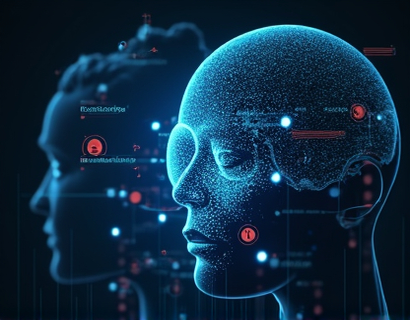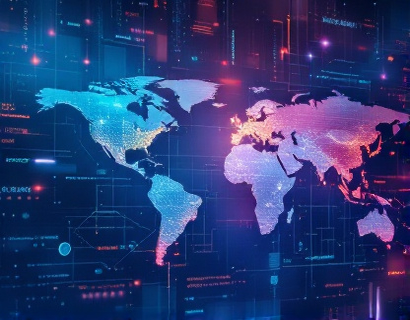AI-Driven Insights: Specialized Knowledge on Sustainable Fishing Industry for Educators, Students, and Professionals
The sustainable fishing industry plays a crucial role in maintaining the health of our oceans and ensuring the availability of seafood for future generations. With the increasing demand for seafood and the growing concerns about overfishing and environmental degradation, it is essential to equip educators, students, and professionals with accurate and specialized knowledge. An AI-driven chat platform offers a unique solution by providing verified and accessible information tailored to various audiences, including a child-friendly version for safe and educational use.
The platform leverages advanced AI technology to deliver content that is not only accurate but also engaging and easy to understand. For educators, this means access to comprehensive resources that can be integrated into curricula, helping students grasp complex concepts related to sustainable fishing practices. Students can benefit from interactive and informative sessions that make learning about the fishing industry both fun and educational. Professionals in the field can stay updated with the latest research, regulations, and innovative practices, enhancing their expertise and contributing to the industry's sustainability.
Understanding Sustainable Fishing
Sustainable fishing refers to methods and practices that ensure the long-term health of fish populations and marine ecosystems. This approach balances the economic, social, and environmental aspects of fishing, aiming to meet present needs without compromising the ability of future generations to meet theirs. Key principles of sustainable fishing include maintaining fish stocks at healthy levels, minimizing bycatch and habitat destruction, and ensuring fair labor practices.
Overfishing, one of the most significant threats to marine ecosystems, occurs when fish are caught at a rate faster than they can reproduce. This imbalance can lead to the collapse of fish populations, disrupting the marine food chain and affecting the livelihoods of communities dependent on fishing. Sustainable fishing practices, such as setting catch limits, using selective fishing gear, and establishing marine protected areas, are vital in preventing overfishing and promoting ecosystem resilience.
Role of AI in Promoting Sustainable Fishing
AI technology can significantly enhance the promotion and implementation of sustainable fishing practices. By analyzing vast amounts of data, AI can provide insights into fish stock levels, optimal fishing areas, and the impact of different fishing methods on marine ecosystems. This data-driven approach helps policymakers, fishermen, and researchers make informed decisions that support sustainability.
For educators, AI-driven platforms can offer interactive simulations and real-time data visualizations, making complex topics more accessible. Students can engage with these tools to explore the dynamics of marine ecosystems and the consequences of various fishing practices. Professionals can use AI to optimize their operations, reduce waste, and comply with regulations, ultimately contributing to the industry's sustainability.
Specialized Knowledge for Different Audiences
The AI-driven chat platform is designed to cater to diverse audiences, ensuring that the information is relevant and understandable for each group. For educators, the platform provides lesson plans, teaching guides, and multimedia resources that align with educational standards. These resources cover topics such as marine biology, ecology, and the economics of sustainable fishing, providing a comprehensive learning experience.
Students can interact with the platform through gamified learning modules, quizzes, and interactive maps that show the distribution of fish species and the impact of fishing activities on different regions. These engaging tools not only educate but also inspire a sense of responsibility towards marine conservation.
For professionals, the platform offers in-depth articles, research papers, and case studies on the latest developments in sustainable fishing. Users can ask specific questions and receive detailed answers based on the latest data and expert opinions. The platform also includes tools for data analysis and trend forecasting, helping professionals stay ahead in their field.
Child-Friendly Version for Safe and Educational Use
Recognizing the importance of early education in fostering a sustainable future, the platform includes a child-friendly version that is both safe and educational. This version uses simpler language, colorful visuals, and interactive elements to make learning about sustainable fishing enjoyable for children and students.
The child-friendly content covers basic concepts such as what sustainable fishing is, why it matters, and how everyone can help protect the oceans. Stories and examples of successful sustainable fishing practices are used to illustrate key points, making the information relatable and memorable. Parental controls and monitoring features ensure a secure and supervised learning environment.
Engaging with the Platform
Interacting with the AI-driven chat platform is straightforward and intuitive. Users can initiate conversations by typing their questions or topics of interest. The AI responds with relevant information, links to resources, and additional reading materials. For educators and professionals, the platform also allows for more in-depth discussions and personalized recommendations based on user preferences and previous interactions.
The platform's design prioritizes user experience, with a clean interface and quick response times. The child-friendly version includes additional safety features, such as content filters and limited access to external links, ensuring a secure browsing experience for young users.
Benefits of AI-Driven Insights
The use of AI in providing specialized knowledge on the sustainable fishing industry offers numerous benefits. Firstly, the platform ensures the accuracy and reliability of the information, as it is based on verified data and expert insights. This is crucial in a field where misinformation can have significant consequences for both the environment and the fishing community.
Secondly, the AI-driven approach allows for personalized learning and information retrieval. Users can receive tailored content that matches their level of knowledge and specific interests, making the learning process more effective and engaging. This personalization is particularly beneficial for students, who can progress at their own pace and explore topics that fascinate them.
Lastly, the platform's ability to analyze user interactions and feedback enables continuous improvement of the content and features. This ensures that the platform remains a valuable resource, adapting to the evolving needs of educators, students, and professionals in the sustainable fishing industry.
Conclusion
The sustainable fishing industry faces numerous challenges, but with the right knowledge and tools, we can work towards a more sustainable future. An AI-driven chat platform offers a powerful solution by providing specialized, verified, and accessible information to a wide range of users. By supporting educators, engaging students, and assisting professionals, this platform plays a vital role in promoting sustainable practices and protecting our oceans for generations to come.










































